TALKING ABOUT ARCHIVES Vol.29
The charm of OLD VANS; this is the moment to take another look
Sneakers have found their place on the runway and are steadily raising their status in the fashion world. Large companies are planning new strategies to promote their high tech sneakers and collaborations; at the same time, there are also places like the niche store Pillow Heat located in Central London, selling only vintage VANS. The owner, Henry Davis, has been collecting US-made VANS for over twenty years; why do these old VANS keep inspiring him? We will explore the charm of VANS and their history by means of his collection of masterpieces.
“Old VANS are shoes you can keep on wearing no matter how many years pass”

___What’s the difference between US-made items and those made today?
Henry, born and raised on the beachside town of Sydney, Australia, started collecting VANS about twenty years ago, around the year 1999. There’s two types of people collecting shoes; people who never wear the shoes they collect and the people who think they only have value when worn. Henry tells us he’s the latter type. “I also spent some time collecting other brands like Nike and Adidas. But other brands using intricate technology for their soles drop in quality after a while, so there’s also a lot of shoes I’ve stopped wearing. Compared to those, the pure high-quality rubber used in the VANS is made by galvanizing it by heating it in an oven at high temperatures and so it doesn’t deteriorate as much over the years. Especially the US-made items I collect are often made with better quality materials than the VANS currently being made, so the sole is sturdy but flexible and so better as a whole.” Apparently, there’s two reasons why making the soles using this method got harder over time.
“VANS has become quite a big company these days, but in the eighties and nineties it got close to getting bankrupt, it was in a dangerous situation. At that time, VANS decided to have their items made in factories abroad to retain the brand itself. The old galvanizing method also had the problem of being not so good for the environment, so the method of manufacturing was changed to the current one. To be precise, VANS are still being made using the galvanizing method, but the purity of the rubber used, the thickness of the layer of rubber as well as the way the glue is attached are all quite different these days.”
___The origin of VANS
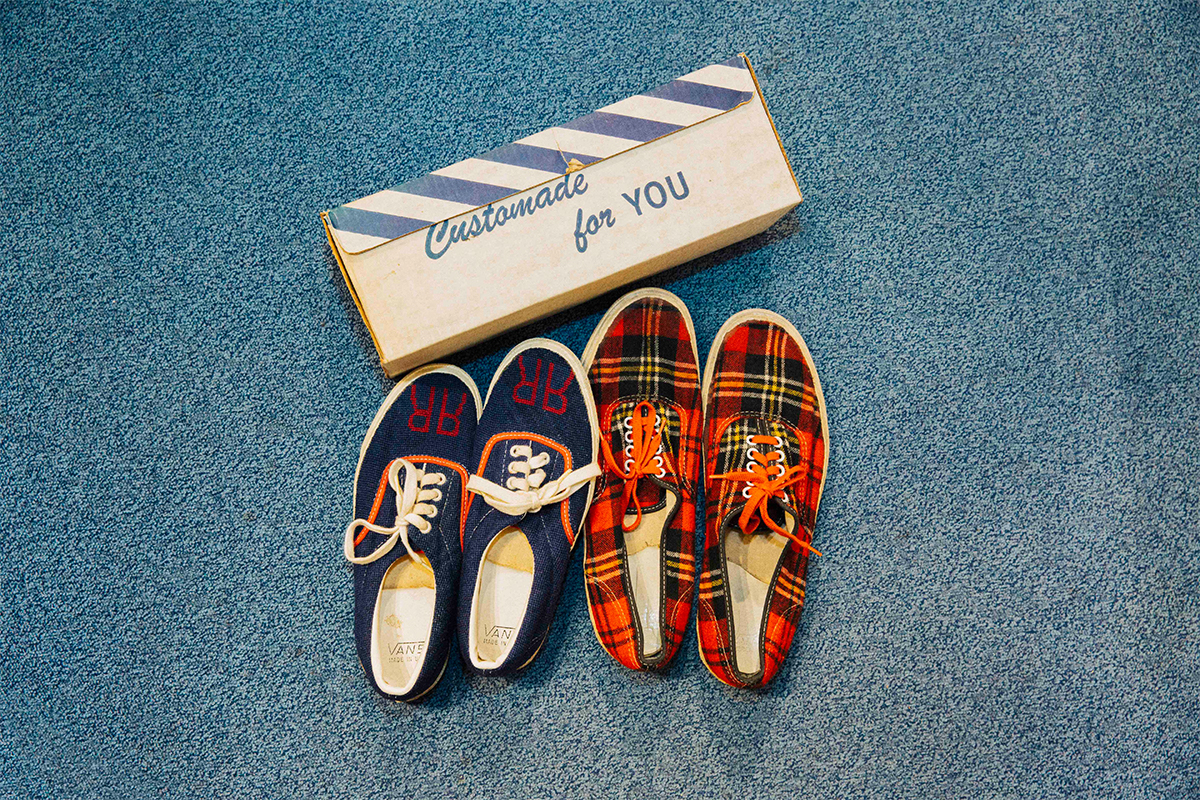
VANS opened as a store selling customized shoes in California, USA in 1966.
“Back then all items were order-made, so when they received an order from a customer, they started making the shoes and delivered them the next day. You could also bring in some left-over material from your favorite jacket, or have a logo designed on them like you can see on the photos. I have one other pair in a different size this this Rolls Royce logo, which makes me think it might’ve been made for some company employee somewhere.”
The checkered shoes on the right side of the picture are a pair he recently sold to the main office of VANS in America. “It seems like VANS America started a business in archive items last year, so they’re buying archive items from all over the world for themselves at the moment. It’s interesting how these shoes go back to California after being in England for a few decades.”
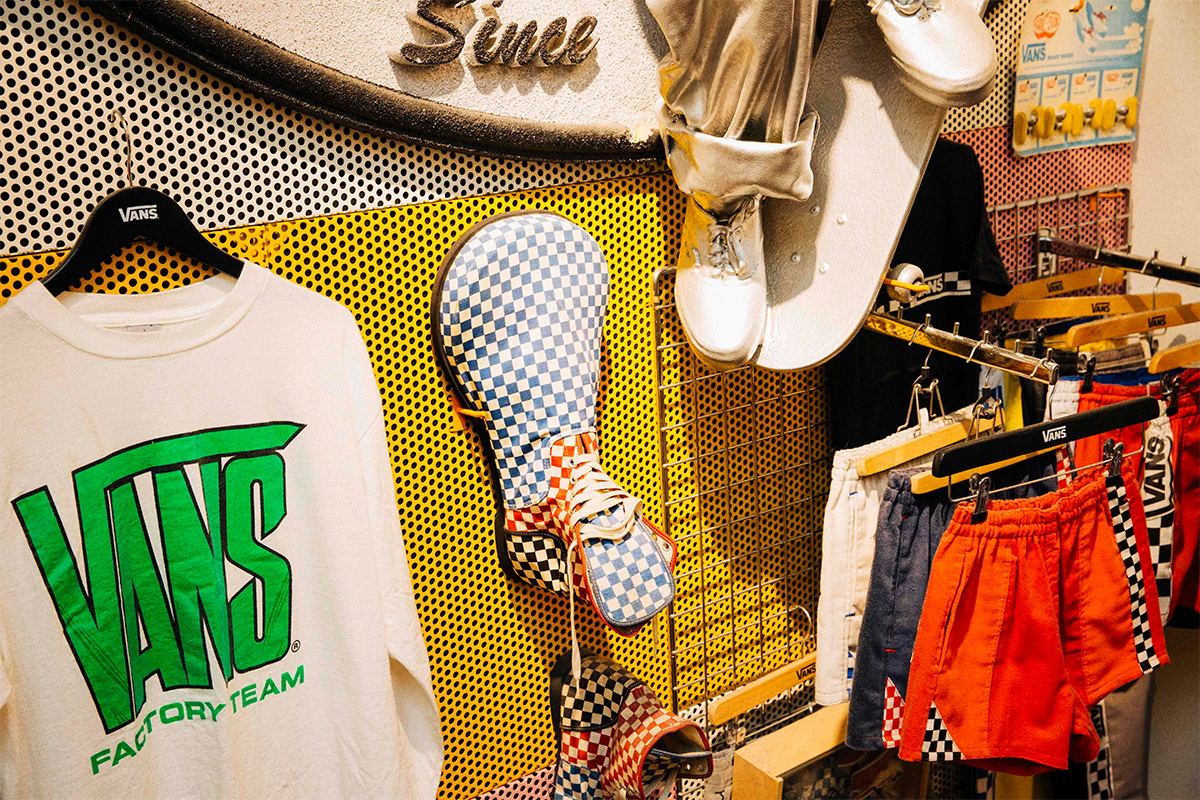
Let’s return to the subject of customized shoes. “After a while, the rumor of people making order-made shoes spread and VANS also started making shoes in a special size made for clowns, often worn at the circus but which are also often seen at opening parties for American stores.
___The debut item of the “off the wall” logo that started off the VANS skater shoes.
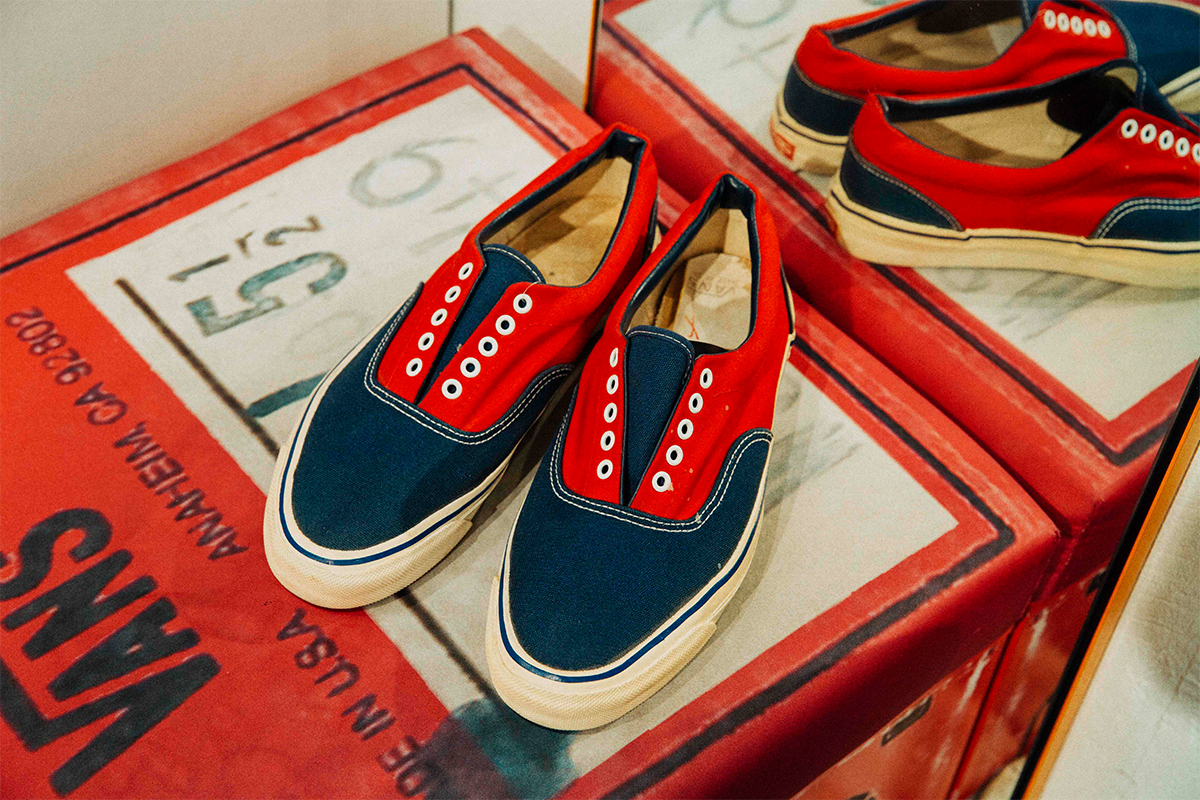
“These are a pair of skate shoes announced first by VANS in 1976. This is also the year the famous logo VANS is known for saying ‘Off the wall’ got started. (Off the wall literally means, well, away from the wall, but in slang it’s also used to mean something outside of the box.’ Until then, most of the designs were fairly simple, but from this year more colorful and daring designs started appearing as well. At the time, the skater and BMX culture was becoming a thing in California and so they apparently went around and asked these people their opinions. That’s the beginning of the history of the street-culture strain of VANS I personally love.”
___The two masterpieces that cannot be left out when talking about VANS and skater culture
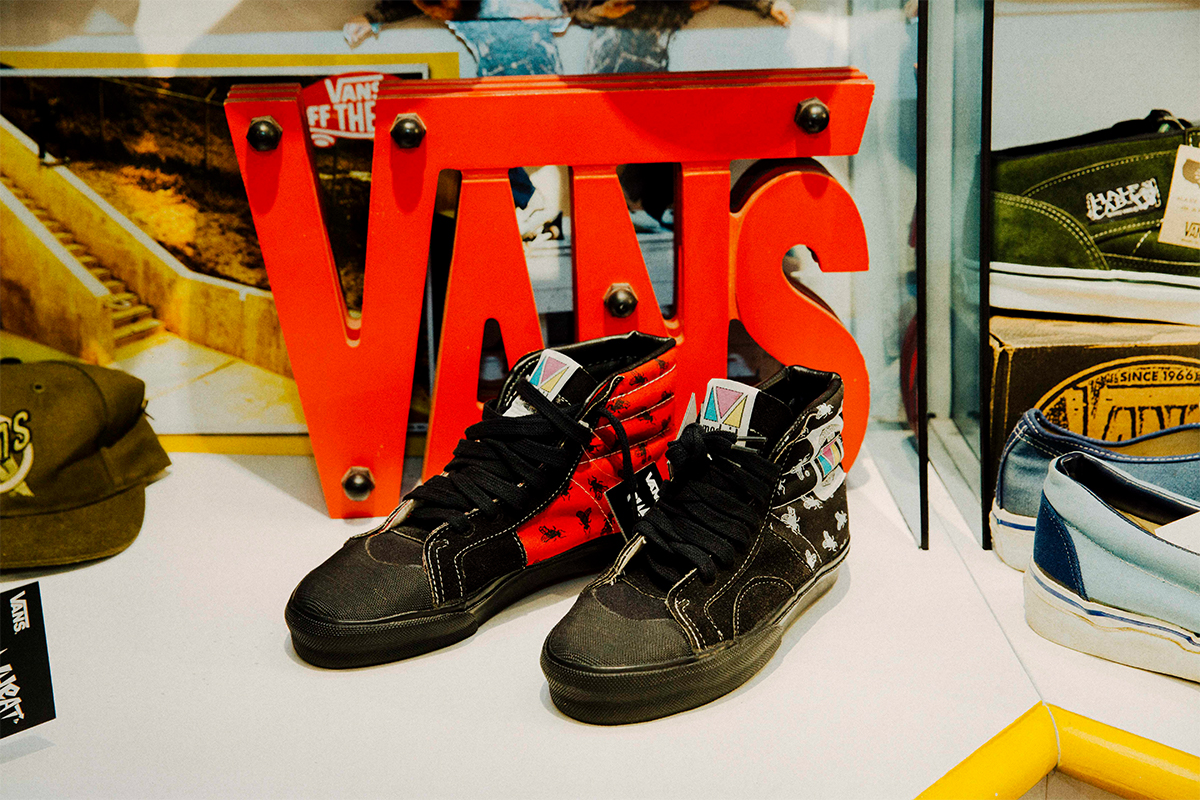
Henry told us that there’s some items you just have to talk about when talking about street culture and VANS. “I have a feeling that there’s also a lot of people in Japan who are a fan of this fly design, am I right?” From this period on, VANS started irreversibly shifting towards street culture. “I only have a ladies’ size item in the store at the moment, but when I sold a men’s size model a few years ago I sold it for 3000 pounds. This is a few years ago already so it might have gone up in price to about 4000 pounds (about 530.000 yen) these days. It’s a masterpiece that many collectors would kill for to own it. This model was a collaboration between a street label from California called Madrid and VANS, which led to it being called the Madrid Fly; it still remains important in the history of VANS as a brand.”

This is the model called Half Cab, made famous as the signature model used by legendary skater Steve Caballero. “The first shoes released in the Caballero model were high cut shoes. But after a while, it became a hype among kids to cut off a bit from the top because they wanted more compact and lightweight shoes. This lead to the idea to just create sneakers that are middle-height to begin with. This is how the Half Cab model was born. The name was based off of one of Caballero’s tricks.”
___The charm of vintage VANS
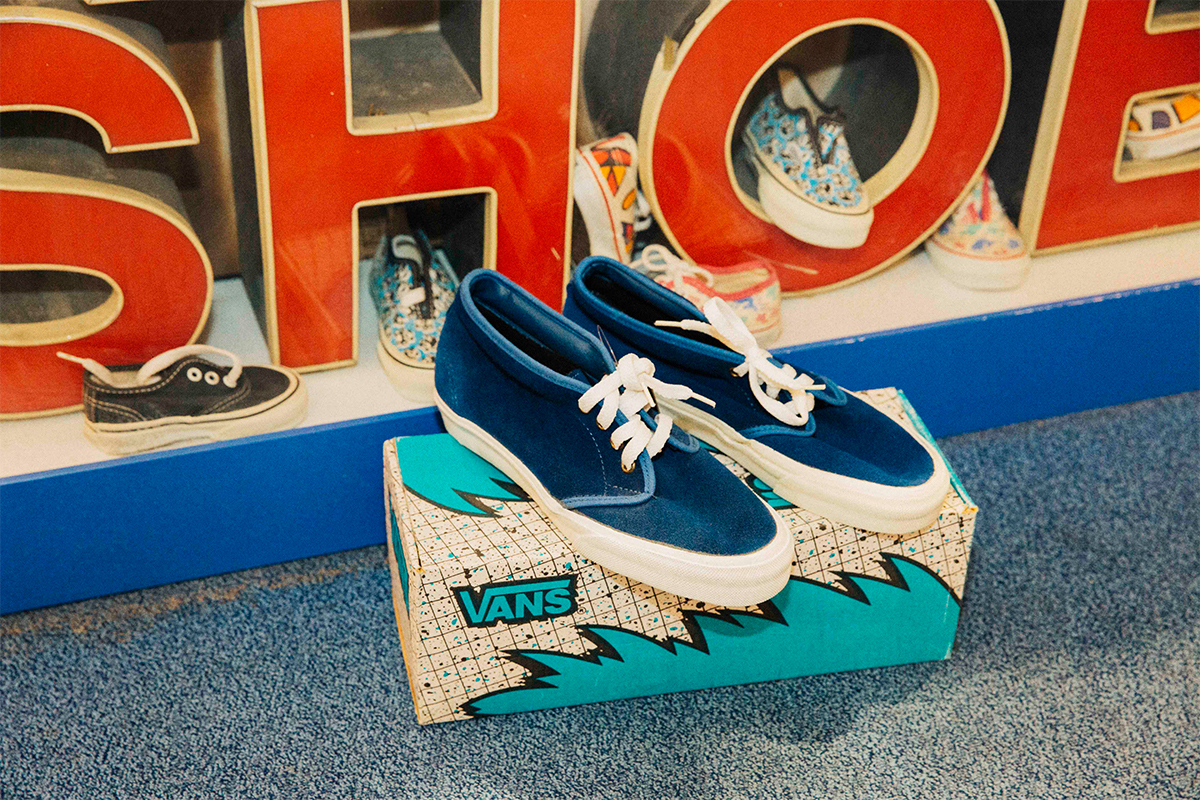
”Like I said at the beginning, the reason I started collecting VANS is because they are sturdy and you can still wear them even now. ‘If you made high-quality shoes, the customers will keep coming back’ is the founder’s honest ideal, and I respect that. These blue shoes are very refined and cool, but they were made twenty years ago, right? I’ve visited Japan a few times on business, but I feel the Japanese have a deep knowledge concerning vintage. Understanding the value of old things, the idea of upcycling, these are things I deeply respect.” He also said this.
For over twenty years, I’ve bought several thousand of pairs of shoes and sold them again as products. But my personal collection only has about 66 pairs. Compared to clothes, it’s harder to find vintage shoes that are to my liking in design as well as size. If you’re looking for dead stock items with the box intact, the chance goes down even more and more. But that also means that you’re moved all the more when you actually find them somewhere. And isn’t that where the true value of vintage shoes lies?”
Henry Davis
Born in Sydney, Australia. Fell in love with US-made VANS over twenty years ago and started his collection; in 2004 he opened his shop, Pillow Heat is East London. He now owns a store on the second floor of the VANS store at Carnaby Street. Last year, he produced a pair of original VANS together with one of the UK’s most famous skaters, Geoff Rowley, while also doing a collaboration with the Japanese company SOL, actively widening his range of activity.
Access:
47 Carnaby street
London, UK
W1F 9PT
Photo_ Aimi Kishimoto
Interview&Text_ Saori Yoshida
Edit_ Tatsuya Yamashiro
